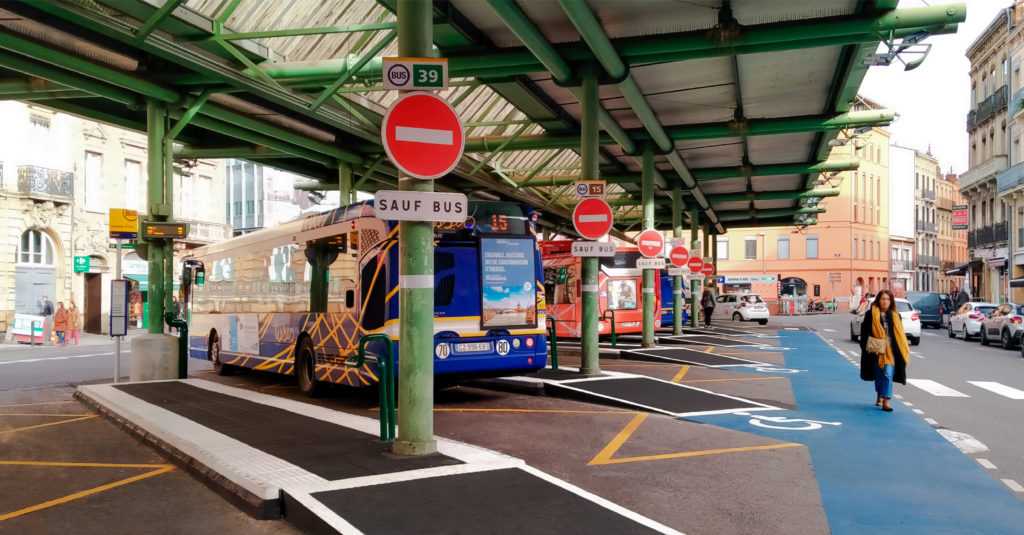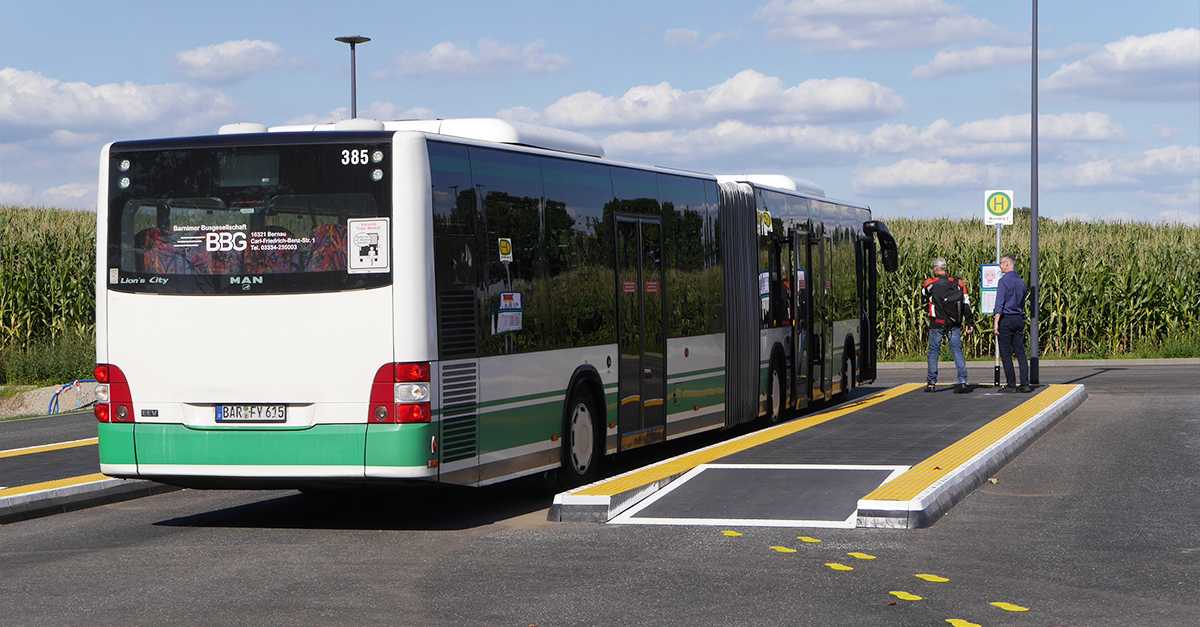Bus stations and airports are transit areas where many people constantly move. That’s why accessible infrastructure is necessary, as it is a fundamental right for everyone, regardless of physical abilities. For travel, bus stations and airports play a crucial role in ensuring an inclusive experience for all travelers and passengers.
Table of Contents
Four examples of accessible infrastructure installed with the Vectorial® system.
The modular design of the Vectorial® system complies with the principles of universal accessibility. It allows for comfortable and safe boarding and onboarding for any passenger carrying luggage or hand baggage, as well as for anyone with a baby stroller, cane, or crutches or traveling with a wheelchair.
Below are some examples of projects carried out in bus stations and airports where accessibility has been improved using the ZICLA Vectorial® system:
1. Enhancing accessibility at the Panketal bus station in Germany.

This installation was carried out in 2023 and driven by the Gemeinde Panketal, consisting of six accessible bus platforms using the Vectorial® system with island configuration. These platforms feature:
- Ramps that comply with the slope required by local accessibility regulations.
- Warning surfaces to facilitate orientation for those who need it.
2. Accessible ramps at JFK airport in New York, United States.

This project was driven by The Port Authority in 2023 and consists of a 73-meter-long platform made with the Vectorial® system. This installation facilitates access to the bus for passengers with reduced mobility and those carrying luggage or hand baggage.
3. Accessible installation at the bus station in Toulouse, France.

In November 2022, 7 Vectorial® system platforms were installed at the city’s bus station in Toulouse to ensure compliance with French accessibility regulations. It is a temporary project, as the definitive remodeling of the station is planned for 2026, so adapting to this timeframe was one of the most important factors to consider in the project execution. When these platforms are dismantled, their parts can be used to build new platforms in other locations. Reversibility and the potential for reuse of Vectorial® system parts are two of its most essential characteristics.
4. Barcelona-El Prat Airport in Catalonia, Spain.

Between 2012 and 2015, four Vectorial® bus platforms were installed at the bus stops of Terminal 1 in El Prat de Llobregat. These platforms were configured as sidewalk extensions, creating an adapted, accessible, and safe waiting space for all users at each stop.
Additionally, the satisfaction of public transportation users after the installation of the bus platforms is very positive. Here you can see a spot from our Swiss partner BURRI about a successful case. These initiatives not only fulfill legal obligations but also demonstrate ethical considerations and significantly enhance the user experience, fostering inclusivity and equality within society.
The construction of accessible bus stops fulfills legal obligations, responds to ethical considerations, and enhances the user experience for all citizens who use them. These accessible stops exemplify inclusive design that promotes equality and creates an environment where diverse abilities are not obstacles or reasons for exclusion. This is an investment in building a more equitable, fair, and understanding society.
Investing in accessible infrastructure reflects a commitment to building a fair and equitable society. If you’re embarking on an urban mobility project, we’re here to assist you. Contact our commercial technicians for personalized guidance on integrating ZICLA products into your project.


0 Comments